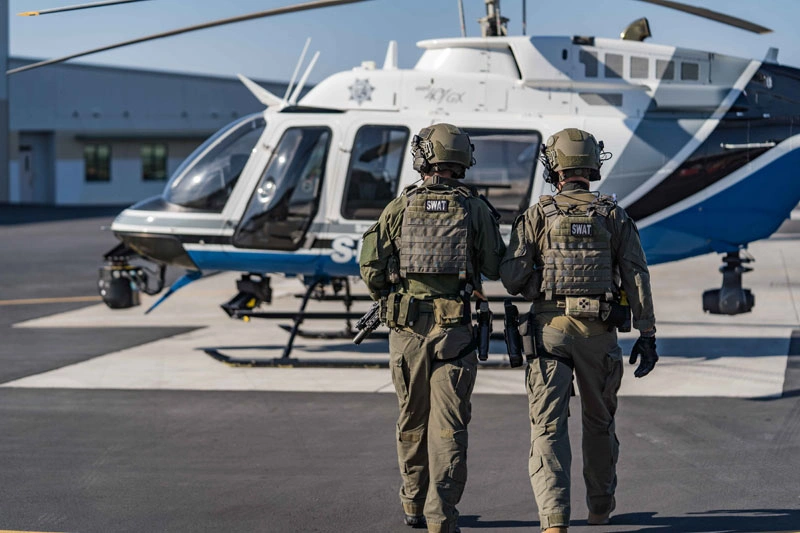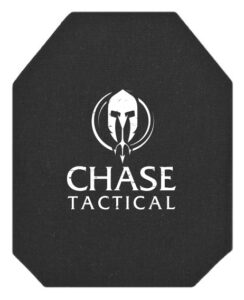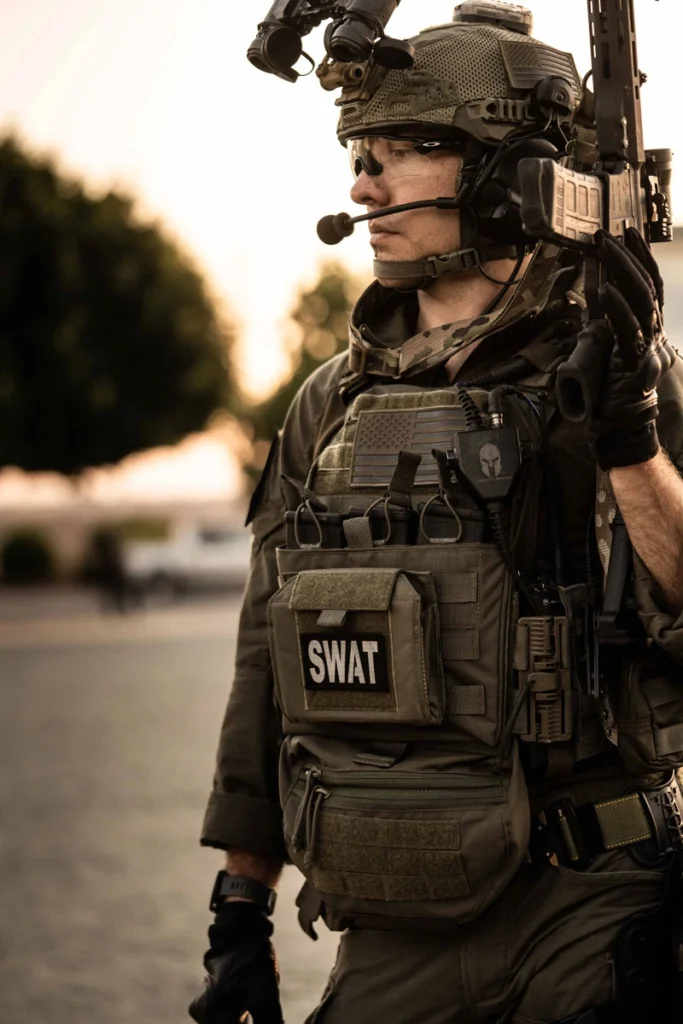Level 4 Armor For Law Enforcement: When Is It Essential

Law enforcers encounter numerous threats in the line of duty, from small arms fire to high-caliber rounds. Of the several types of body armor available, Level 4 armor offers the best ballistic protection.
But when is it necessary for officers to wear this kind of armor? Knowing its capabilities, advantages, and disadvantages can help you decide when to deploy it. Before that, it is essential to understand what Level 4 Body Armor is and for which operations it is used. So, without any further ado, let’s discuss.
What Is Level 4 Body Armor?

According to the National Institute of Justice (NIJ), Level 4 body armor is the highest-rated personal protective gear. It stops armor-piercing rifle rounds, including .30-06 AP rounds. This type of armor is made from advanced ceramic and composite materials, which absorb and dissipate the energy of high-impact rounds.
Level 4 plates are typically made from ceramic, polyethylene, or both. These materials allow the armor to break upon impact, distributing the bullet’s force and reducing penetration.
When Is Level 4 Armor Essential For Law Enforcement?
Level 4 body armor has been engineered to repel armor-piercing rifle rounds and thus is the strongest protection choice. In contrast to lower-tier armor, which will only deter handgun rounds or basic rifle bullets, Level 4 plates have been tested against resisting.30 caliber armor-piercing rounds. This means that they are a vital selection for officers in high-risk scenarios.

1. High-Risk Operations
SWAT units and tactical operations often find themselves facing heavily armed suspects. In such operations, it is generally necessary to have maximum protection from rifle fire.
2. Active Shooter Situations
In active shooter situations, suspects may use high-powered rifles capable of penetrating lower levels of body armor. Having Level 4 protection significantly increases an officer’s chances of survival.
3. Counter-Terrorism and Hostage Rescues
Actions under terrorism or hostages tend to have the utmost use of armor based on unpredictability and the weapon involved.
4. Riot Control in High-Risk Areas
Officers may encounter armed forces during major civil uprisings, such as guns and armor-piercing rounds. When conditions are shaky, Level 4 armor would provide security.
5. Warrant Execution in Dangerous Locations
Police officers executing high-risk warrants in areas well known for violent crime and gang violence might find Level 4 armor useful. It is also helpful, especially when dealing with suspects with military-grade weapons.
Different Types of Level 4 Armor
Level 4 armor is not one-size-fits-all. It comes in different materials, constructions, and weights. Let’s explore the various types of Level 4 plates.
1. Ceramic Level 4 Plates
- Material: Made from aluminum oxide or silicon carbide.
- Weight: 6-8 lbs per plate (varies based on size).
- Protection: Can absorb and dissipate bullet energy but is brittle and can crack after multiple hits.
- Best for: Military, SWAT teams, law enforcement.
2. Polyethylene Level 4 Plates
- Material: Made from UHMWPE (Ultra-High Molecular Weight Polyethylene).
- Weight: 4-6 lbs per plate (lighter than ceramic).
- Protection: Can stop rifle rounds but may not handle armor-piercing or ceramic plates.
- Best for: Those needing lightweight but high protection.
3. Composite Level 4 Plates
- Material: A combination of ceramic and polyethylene layers.
- Weight: 5-7 lbs per plate (mid-range weight).
- Protection: Stronger than pure ceramic and can take multiple hits.
- Best for: Those who need a balance between weight and durability.
Level 4 Armor vs. Other Body Armor Levels
How does Level 4 armor compare to other body armor levels? Let’s break it down:
Does armor Level stop handgun Rounds? Stops Rifle Rounds? Armor-Piercing Protection? Weight
Level II Yes (up to 9mm, .40 S&W) No Very Light
Level IIIA Yes (up to .44 Magnum) No Light
Level III Yes (up to 7.62×51mm) No Medium
Level IV Yes (including 30-06 AP) Yes Heavy
Advantages of Level 4 Armor
Bureaus must make a comprehensive threat evaluation before issuing Level 4 armor to law enforcement officers. Knowing how much risk officers are exposed to daily allows them to be adequately protected without overburdening them.
Superior Protection

Level 4 armor provides the highest level of ballistic resistance available, protecting officers against some of the most dangerous threats.
Increased Survival Rates
In cases where officers are being shot at with high-powered weapons, the difference between life and death can be wearing Level 4 plates.
Training and Adaptation
Though Level 4 armor is more protective, officers must be trained to adjust to its weight and mobility limitations. Physical fitness and movement drills specific to the task can reduce the difficulties of heavier armor.
Integration with Tactical Gear
The armor must be compatible with other tactical gear, including vests, helmets, and weapons systems. Agencies must choose armor that can be integrated perfectly with current equipment for maximum performance.
Disadvantages Of Level 4 Armor
Although it offers superior protection, Level 4 body armor has several disadvantages law enforcement officers must consider. One major disadvantage is that it is very heavy, which can decrease an officer’s mobility and stamina during long missions.
Officers who use Level 4 plates can also become more easily fatigued, which can impair their ability to respond quickly in dynamic operations.
Conclusion
Level 4 armor is critical for law enforcement officers working in high-risk environments. Though it offers superior ballistic protection, weight and expense must be considered. Agencies must consider the necessity of Level 4 armor against the daily threats officers face.
Frequently Asked Questions
Can level 4 armor stop multiple shots?
Yes, but it depends on the material. Ceramic plates may crack after multiple hits, while composite plates withstand more rounds.
How long does Level 4 armor last?
Most Level 4 plates have a 5-10-year lifespan, depending on usage and storage conditions.
Can civilians legally own Level 4 armor?
In most UIntes, civilians can buy and own Level 4 armor unless local laws prohibit it.
Is Level 4 armor comfortable to wear?
Due to its weight and bulk, Level 4 armor is not as comfortable as lower-level options. However, it offers the highest protection.
